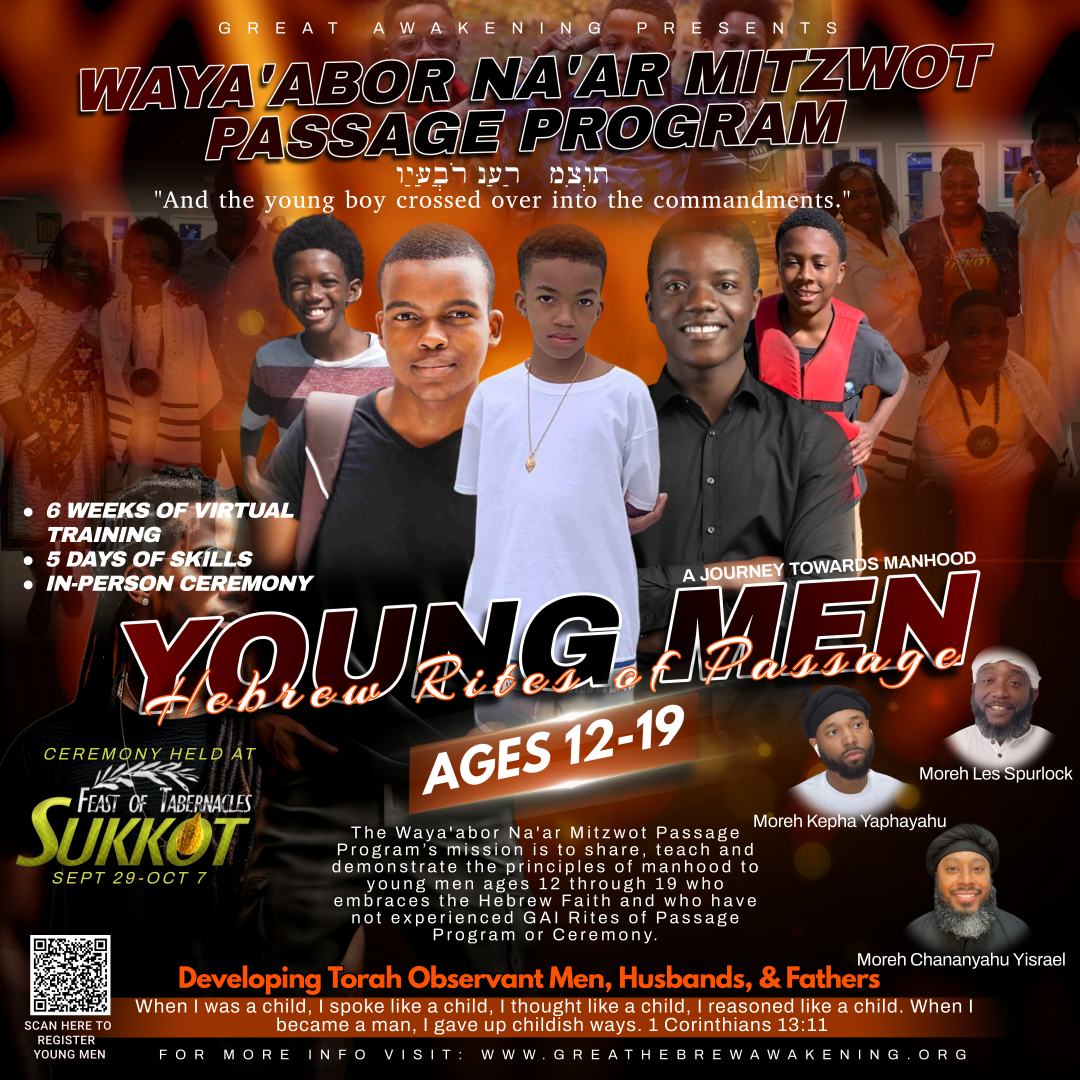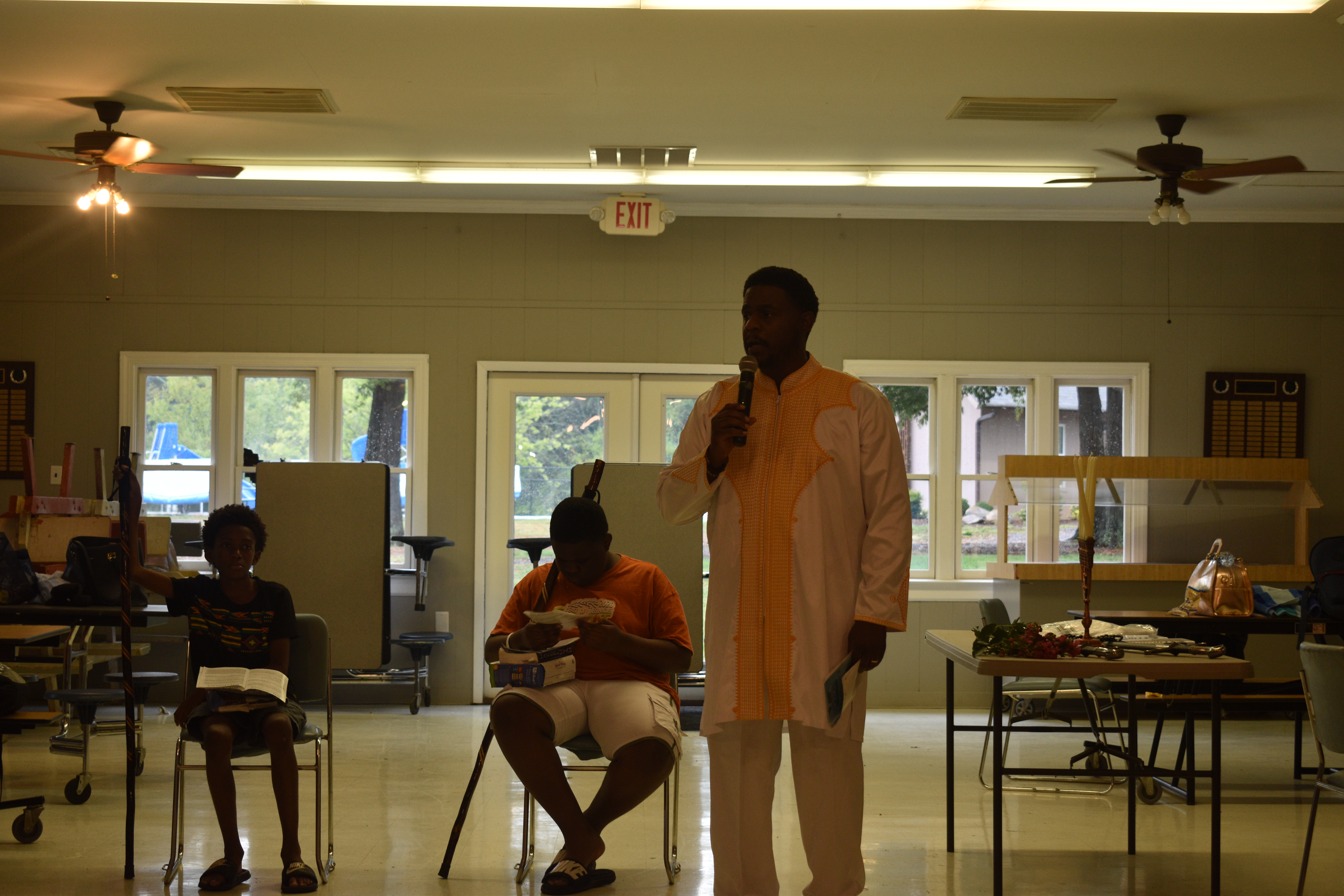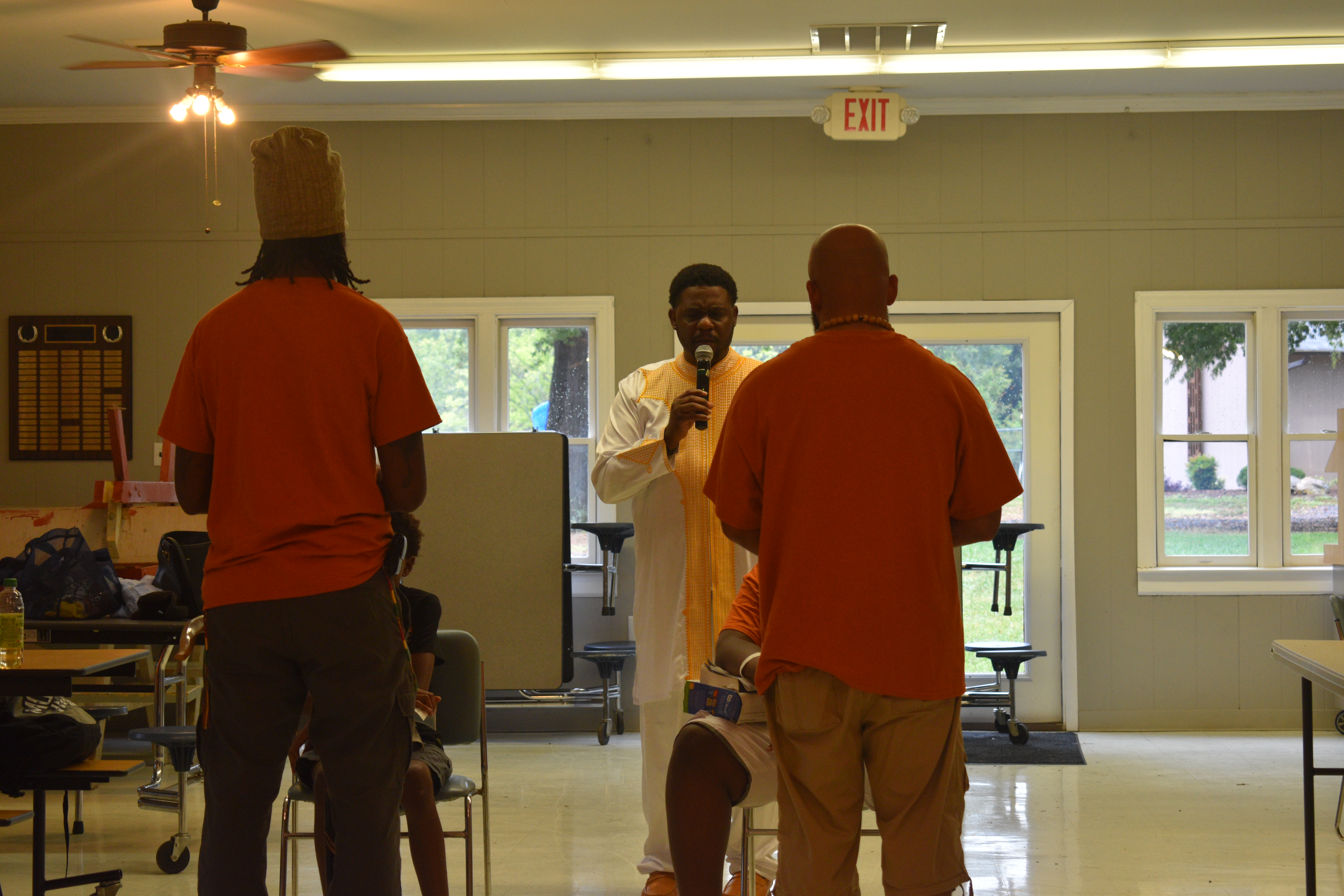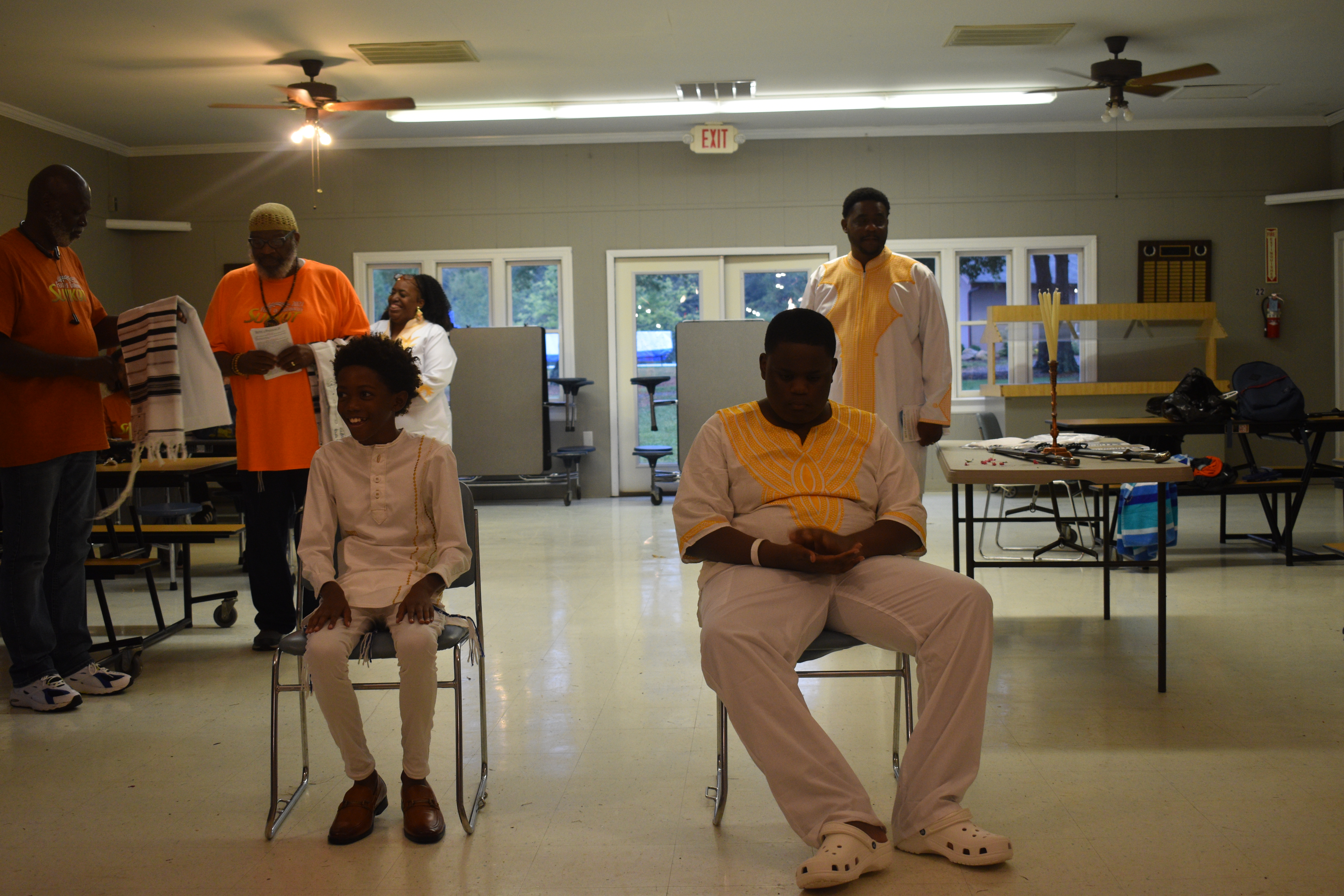























Rites of Passage
The Great Awakening Waya'abor Na'ar Mitzwot Passage Program’s mission is to share, teach and demonstrate the principles of manhood to young men ages 12 through 19 who embraces the Hebrew Faith and who have not experienced GA Waya'abor Na'ar Mitzwot Passage Program or Ceremony. Young men will meet bi-weekly to be mentored, equipped, and trained into strong men who are torah-observant, responsible, and leaders. During this training each young man will learn the necessary material to prepare for their Rites of Passage Ceremony during Sukkot each year.
When I was a child, I spoke like a child, I thought like a child, I reasoned like a child. When I became a man, I gave up childish ways. 1 Corinthians 13:11
Waya'abor Na'ar Mitzwot
וַיַּעֲבֹר נַעַר מִצְות
"And the young boy crossed over into the commandments."
וַיַּעֲבֹר נַעַר מִצְות
"And the young boy crossed over into the commandments."
Our focus will be the 3 tiers of Manhood.
1 Torah observant Man
2 Torah observant Husband
3 Torah observant Father
Na'ariym will be required to learn and recite:
* 10 commandments
*The Shema
*Aleph-Taw
*(Tzitzoth)Numbers 15:38-41
Activities while at sukkot:
*Fishing
*Firearm/awareness
*Tzitzit making
*Sukka fabrication
*Ceremony/Immersion
WHAT WE DO:
- Empowerment Workshops and Sessions
- Community Service Opportunities
- Recreational and Educational Trips
- Fun and Engaging Activities
- Small and Large Group Discussions
- Torah Study/Bible Study
- Tournaments
- Vocational Projects
- One on One Mentoring
- Learn Conflict Management Skills
- Learn Money Management Skills
- Individual Tutoring
- Employment Preparation / College Application Preparation Assistance
- Preparation for Rites of Passage Program
Hebrew Rites of Passage or Bar Mitzvah
Meaning of Bar and Bat Mitzvah: Bar mitzvah means “son of the commandment” (bar is Aramaic; the Hebrew for son would be ben), while bat mitzvah is similarly “daughter of the commandment.” The term can refer either to the person or to the ceremony, as in “He became bar mitzvah last week,” or “He had his bar mitzvah last week.” The plurals are b’nei mitzvah and b’not mitzvah.
New scholarship shows it is from West Africa, though the term itself is found in the Talmud. One significant age in the Bible is twenty years old, which qualified Israelite males for military service:
Take a census of all the congregation of the people of Israel, by clans, by fathers’ houses, according to the number of names, every male, head by head. From twenty years old and upward, all in Israel who are able to go to war, you and Aaron shall list them, company by company. (Numbers 1:2-3, and other passages)
The bar mitzvah, however, takes place at thirteen years of age, and the only mention of someone of that age in the Tanakh is in Genesis 17:25: “And Ishmael his [Abraham’s] son was thirteen years old when he was circumcised in the flesh of his foreskin.” So for the significance of the age of thirteen for a bar mitzvah, we must look elsewhere, as the following section shows.
We have an interesting passage concerning Yahusha at twelve years of age:
Now his parents went to Jerusalem every year at the Feast of the Passover. And when he was twelve years old, they went up according to custom. And when the feast was ended, as they were returning, the boy Yahusha stayed behind in Jerusalem. His parents did not know it, but supposing him to be in the group they went a day’s journey, but then they began to search for him among their relatives and acquaintances, and when they did not find him, they returned to Jerusalem, searching for him. After three days they found him in the temple, sitting among the teachers, listening to them and asking them questions. And all who heard him were amazed at his understanding and his answers. (Luke 2:41-47)
Rites of Passage/Coming of Age Ceremonies & Life Span Development
The fact that the age of twelve is specifically noted may suggest that it was a transition age even in the first-century, though any evidence comes from the later period of the Talmud. At least, twelve could be considered an age when a young man evidenced wisdom and piety. Josephus (Antiquities X.4.1) says of King Amon:
And when he was twelve years old, he gave demonstrations of his religious and righteous behavior; for he brought the people to a sober way of living, and exhorted them to leave off the opinion they had of their idols, because they were not gods, but to worship their own El. And by repeating on the actions of his progenitors, he prudently corrected what they did wrong, like a very elderly man, and like one abundantly able to understand what was fit to be done …
Josephus likewise speaks of Samuel (Antiquities V.10.4): Now when Samuel was twelve years old, he began to prophesy: and once when he was asleep, Yahuah called to him by his name; …
Luke may then be pointing to Yahusha’s wisdom and special relationship to Yahuah by mentioning his age. Certainly Luke intends his readers to share the amazement that this twelve-year-old was engaging in a religious discussion beyond his years. Even Yahusha’s testing in the wilderness for 40 days could be considered a coming of age ceremony as far as his ministry goes.
Coming of age is a young person's transition from being a child to being an adult.
Coming of Age Ceremonies Among Hebrews in Africa: African coming-of-age rituals have traditionally been seen as consisting of three main phases: separation from the community, a period of transition or liminality and reincorporation into society. In the first stage, young boys or girls are physically removed from the community and taken to the “bush,” which may be fully separate from the village or may be a special enclosure or specific building in the community. During the transition period, initiates learn the skills necessary to participate in society as adults. The traditional length of seclusion varies from a period of days or weeks to several years. Among the Krobo of eastern Ghana, girls are secluded from three weeks, during which they are trained in appropriate female behavior, personal grooming, domestic skills, dance and the art of seduction. The Senufo of Ivory Coast initiate girls into the secret women’s society of Poro through a process that lasts for a period of seven or eight years.
Umemulo is a traditional Zulu coming of age ceremony for women.The rituals involve slaughtering a cow and the traditional Zulu dance Ukusina involving a spear.A woman's Umemulo ceremony signifies that the she is now ready for marriage.
The Maasia: The first boy's initiation is Enkipaata (pre-circumcision ceremony), and is organized by fathers of the new age set. Enkipaata can only happen, when the senior warriors are settled. More on senior warriors will be discussed later in this page.
A delegation of boys, aged 14 to 16 years of age, would travel across their section land for about four months announcing the formation of their new age-set. The boys are accompanied by a group of elders spearheading the formation of a new age-set.
A collection of 30-40 houses are built for the initiating boys. The houses are located in one large kraal chosen by the Oloiboni (prophet). This is where all boys across the region will be united and initiated. Before the ceremony, the Olopolosi olkiteng,chief of the boys, must be chosen. Olopolosi olkiteng is a position not desired by anyone because it is considered unfortunate. The new chief is to shoulder all of his age group's sins. The day before the ceremony, boys must sleep outside in the forest. When early dawn approaches, they run to the homestead and enter with an attitude of a raider. During the ceremony, boys dress in loose clothing and dance non-stop throughout the day. This ceremony is the transition into a new age set. After enkipaata ceremony, boys are ready for the most important initiation known as Emuratare (circumcision).
Ritual songs, dances and masks or other artwork feature prominently in many initiation rites. Senufo girls achieve womanhood through a ceremonial dance called the Ngoron, the steps of which can take up to six months to master, marking the culmination of the girls’ ritual training.
Ordeals reflect the belief that pain is an important part of becoming an adult. “Suffering is part of the development of personhood,” says Michelle Johnson, assistant professor of anthropology at Bucknell University, who has spent a decade conducting research on initiation rituals among the Mandinka people of Guinea-Bissau. Yahusha even had to suffer in the wilderness.
Hebrew Rites of Passage Ceremony
PART I (All participants should Dress in Immersion Attire)
DISCOVERY
- Each participant will partake in a Hunt earlier that day to find Manna (Matzo Bread), Law (Bible), Guidance/Leadership (Staff).
- Purpose of Rites of Passage explained
- Purpose of artifacts found during scavenger hunt explained
- Artifacts are placed in a keepsake Box*
TORAH (Yarah)
Each participant must recite (recite the 10 Commandments & Shema before friends and family at the ceremony demonstrating their commitment to their faith and recognize that they are now responsible for following Torah)
Recite the Ten Commandments
- You shall have no other gods before Me.
- You shall make no idols.
- You shall not take the name of the Yahuah your Elohim in vain.
- Keep the Sabbath day holy.
- Honor your father and your mother.
- You shall not murder.
- You shall not commit adultery.
- You shall not steal.
- You shall not bear false witness against your neighbor.
- You shall not covet.
Recite/Read the Shema Prayer
Deuteronomy 6:4-7
4 Hear, O Israel: Yahuah our Elohim is one:
5 And thou shalt love Yahuah thy Elohim with all thine heart, and with all thy soul, and with all thy might.
6 And these words, which I command thee this day, shall be in thine heart:
7 And thou shalt teach them diligently unto thy children, and shalt talk of them when thou sittest in thine house, and when thou walkest by the way, and when thou liest down, and when thou risest up.
Recite the Hebrew Alephbet
Alef – silent
Bet – B
Gimmel – G
Dalet – D
Hey – H
Vav – V
Zayin – Z
Chet – Ch
Tet – T
Yud – Y
Kaf/Chaf – K/Ch
Lamed – L
Mem – M
Nun – N
Samech – S
Ayin – silent
Peh – P
Feh – F
Tzade- Ts
Koof – K
Resh – R
Shin/Sin – S
Tav– T
IDENTIFICATION
Unveiling of New Hebrew Surname (Parents should seek Yah for a name and teach the boys how to pronunciation the name)
Each will recite and explain the meaning of their name in Hebrew
AHABA E’MA
- Each young man will read Scriptures to Mom (They must find a scripture on their own)
- Each young man will present roses to mothers are reading)
KEHILLA (COMMUNITY)
Each participant must show their committed to Community (continuity with their personal story and of connection with their community).
Recitation Quote: “One of the greatest things about Hebrew community is that it enables me to follow the ways of Torah by welcoming and helping people in a way I couldn’t as an individual. I am committed to use my strength, resources, and share in the work and responsibility. I will kindly entreat all people especially those who are a part of my community. I recognize that I become a Torah-Observant man when I rise above the narrow confines of my individualistic concerns to the broader concerns of my community. Together, my community and me, exists Because of my community, I am. Ecclesiastes 4:9-12 -9 Two are better than one, because they have a good return for their labor: 10 If either of them falls down, one can help the other up. But pity anyone who falls and has no one to help them up. 11 Also, if two lie down together, they will keep warm. But how can one keep warm alone? 12 Though one may be overpowered, two can defend themselves. A cord of three strands is not quickly broken.
I recognize that I need my community and my community needs me. I will live out my life to serve, protect, and love my community. I am my community and my community is me. I am Hebrew by Blood, Israelite by Nationality, Negro by Title, and African Bantus by Diaspora.
Congregational Circle:
The community will surround each young man and sing (Shema Israel)
NATHAN (GIVING)
- Each participant will read Scripture on importance of giving (they must find this scripture on their own)
- Each Participant must present Money to the Missions and/or APP (Each of them will give a cashier check or cash to Moreh Boddy or Morah McGee)
EBED (SERVITUDE)
- Each participant must read Scriptures to each other on Servitude (they must find this scripture on their own)
- Each participant must engage in the washing of each other’s Feet and dry with Towel (foot washing at Lake). Each will be paired with another participant.
TEBILLAH (IMMERSIONS)
- Great Awakening Morehs will immerse each participant
Participants will go change clothes for the second half of the ceremony
PART 2 (All participants should Dress in Formal Hebrew Attire)
TEPHILLAH (PRAYER)
Prayer Shawl (Talit)
Elders (Zaqen) will drape each of participants with a Prayer Shawl*
Importance of Prayer
Given the Importance of Prayer (Read by Elder): "And Elisha prayed, and said, Yahuah, I pray thee, open his eyes, that he may see. And Yahuah opened the eyes of the young man, and he saw: and, behold, the mountain was full of horses and chariots of fire round about Elisha"-2 Kings 6:17. Elisha's petition for this young man was, "O Yahuah, I pray thee, open his eyes, that he may see!" The young man was at that time in the peculiar condition of seeing, and yet not seeing. Prayer allows for young men to see life through the correct perspective. It also allows him to guided, offer confession of his sins, which should lead to his genuine repentance. Moreover, prayer grants a young man the opportunity to present our requests to Yah. All of these aspects of prayer involve communication with our Yahuah.
” … if my people, who are called by my name, will humble themselves and pray and seek my face and turn from their wicked ways, then will I hear from heaven and will forgive their sin and will heal their land.” -2 Chronicles 7:14
“He gives strength to the weary and increases the power of the weak. Even youths grow tired and weary, and young men stumble and fall; but those who hope in Yahuah will renew their strength. They will soar on wings like eagles; they will run and not grow weary, they will walk and not be faint” (Isaiah 40:29-31).
Therefore we offer to AJ and Joshua the prayer of Elisha: "O YAH, I pray thee, open their eyes, that they may see!" Oh, that the prayer might be answered at this hour!
Laying on of Hands
Laying on of Hands and Prayer from Elders
GIDON (WARRIOR)
Recitation
OFFICIANTS: What Do Hebrew Men Do?
PARTICIPANTS: “Hebrew Men....Reject Passivity, Accept Responsibility, Defend Relentlessly, Walk Righteously, and Lead Courageously”
Appointed with Sword*
Officiants will call them out by their sur Hebrew names and “appoint” them with the sword into manhood and says, “Truth & Discipline!” Each will kneel to be appointed. Each participant will then respond “Honor & Love”.
Menorah
Light the Menorah: A menorah is sitting on table. Participants come to the table one at a time, light the six outer branches of the Menorah. Officiant will light the middle candle and give the importance and significance.
Purpose (Read by Officiants): I was in the Spirit on the Master’s Day, and I heard behind me a great voice as of a trumpet, saying, ‘I am Aleph and Tav, the First and the Last,’ and, …………And I turned to see the voice that spoke with me. And being turned, I saw seven golden candlesticks; and in the midst of the seven candlesticks One like unto the Son of Man, clothed with a garment down to the feet and girded about the breast with a golden girdle. ~ Revelation 1:10-13, KJV21
Menorah is multibranched candelabra that has been an important symbol in both ancient and modern Israel. The seven-branched menorah was originally found in the wilderness sanctuary and then later in the Temple in Jerusalem and was a popular motif of religious art in antiquity.
The menorah is first mentioned in the biblical book of Exodus (25:31–40), according to which the design of the lamp was revealed to Moses by Yahuah on Mount Sinai. In the Bible the menorah is labelled 'light', 'the lamp of Yah' (I Sam. 3.3). The candlestick was to be forged out of a single piece of gold and was to have six branches, “three out of one side, and three out of the other” (Exodus 25:31). The cup atop the central shaft, which is somewhat elevated to signify the Sabbath, was flanked by three lights on each side.
This powerful symbol of Yah’s light and holiness in our dark and sinful world. Tradition holds that it reminds the people of Israel that we are also called to be his “Light to the nations” as Yah prescribed in Isaiah 42:6. Gently spreading light without force – “Not by might, nor by power, but by my Spirit, says Yahuah”,
The Menorah has SEVEN BRANCHES, one for each day of Creation. The recurring patterns and cycles, there are 7 days, 7 weeks, 7 Sabbaths, 7-fold sprinkling, and the 7 feasts (7 mo’edim—appointed times of Yahuah). Where the 7 feasts are concerned, the number 7 and compounds of 7 are repeated.
MANHOOD
Charge
Charge and/or advice from fathers (if no father is present, a male leader will stand proxy).
Medallion
Fathers put Medallion around the neck of Sons. Medallions are provided by the Great Awakening.
FINAL/GIFTS
- Officiant gives each participant a PLAQUE, STAFF, a BIBLE and, a SWORD of valor that is "never given, always earned". Presentation of Gifts*
- Thank participants. Each Participant gets an opportunity to thank those who have helped them through their journey.
- Giving gifts-in-kings and monetary gifts from the Community
RECEPTION
-
Food and Cake*
